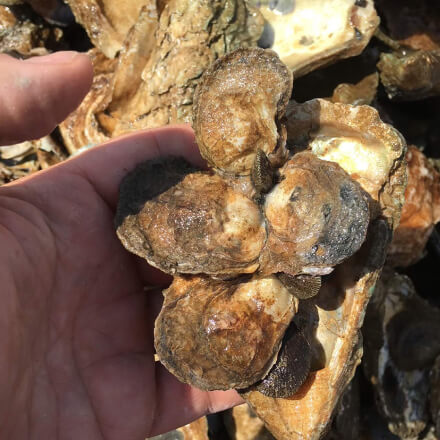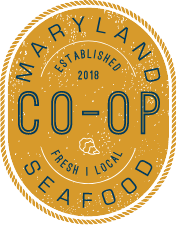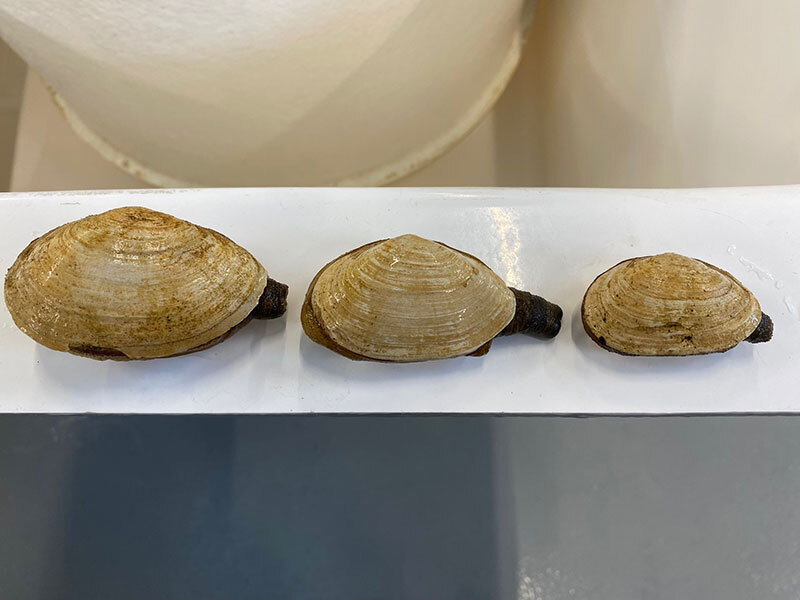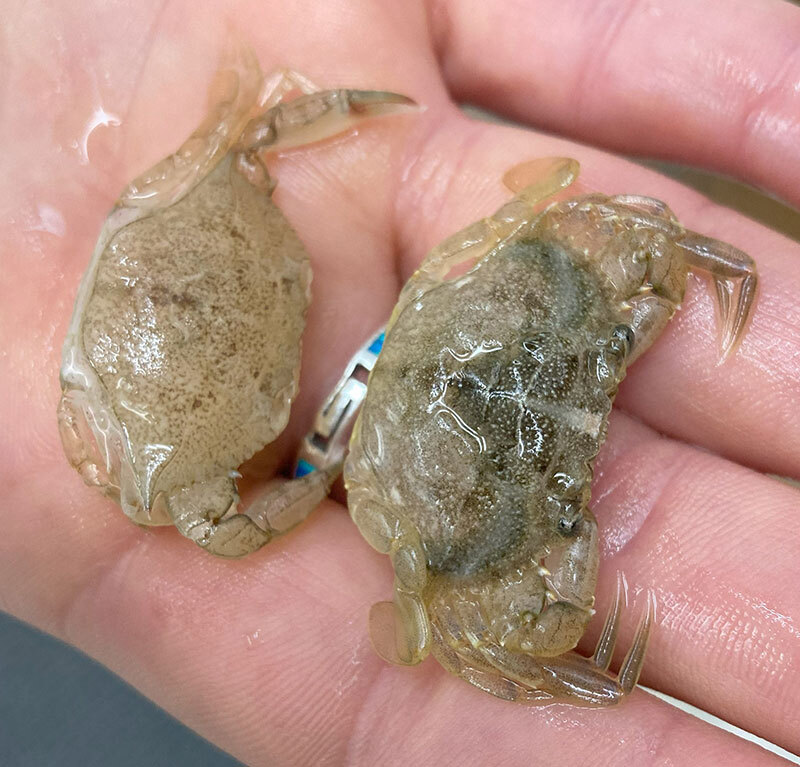environment & aquaculture
Ferry Cove is helping the aquaculture community prepare for new economic opportunities while working to address coastal resiliency issues and supporting the Bay's ecology.
Ferry Cove is helping the aquaculture community prepare for new economic opportunities while working to address coastal resiliency issues and supporting the Bay's ecology.
The oyster is a species deeply engrained in our nation’s culture, water quality and economy, The Chesapeake Bay exemplifies these qualities. Habitat restoration efforts on the Bay demonstrate that oyster reefs create ideal habitats for a diverse marine environment. The boom in popularity of eating oysters propelled the bay’s shellfish farming industry and watermen whose families have long worked these waters have expanded into the aquaculture business. Scientific advances have made it possible for hatcheries like Ferry Cove to support the rising demand for shellfish for both consumption and ecological benefits while preserving the traditions of those who work on the water.

An emerging new income source for shellfish growers and public fishery harvesters is selling nutrient credits from the oysters they harvest. Oyster aquaculture is an EPA recognized nutrient reduction best management practice (BMP). Maryland’s Water Quality Trading Program enables these oyster nutrient credits to be traded. This type of nutrient trading and credit purchasing is a market-driven, cost-effective strategy to reduce nutrients in the Chesapeake Bay. It is a new tool for local governments and companies to meet federal Watershed Implementation Plans (WIP) and Stormwater MS4 permits goals.
More information about the trading process can be found on the MDE website.
Interested in selling your credits or getting them certified? Contact the Maryland Seafood Cooperative.

Recognizing that many watermen are new to aquaculture, the Maryland Seafood Cooperative was formed in 2017 to unite, empower, and support the local watermen community with the goal of providing them with supplemental economic opportunities to augment their wild fishery harvests. The Coop currently has 21 member owners, 90 acres of bottom leases under management and its own setting facility located at Ferry Cove Shellfish. The Coop also offers Aquaculture Support Services and Training for new growers and those looking to grow their businesses.
Learn more
Harmful Algal Blooms not only impact human health but also the surrounding organisms that inhabit that space in the environment. Here at Ferry Cove, we are working with the Phytoplankton Monitoring Network created by the NOAA National Centers for Coastal Ocean Science to gather data on local species observed and act as a warning system for what could potentially come. This early detection can help prevent the ingestion of algal toxins by humans and allow aquaculturists to make real-time data-driven decisions with their farms to prevent product loss.
Ferry Cove is actively exploring ways to expand aquaculture opportunities in Maryland and improving the processes currently being employed.

The soft-shell clam (Mya arenaria), also known as the longneck or steamer was once a thriving fishery in Maryland with wild harvests exceeding 500,000 bushels a year. Today only a thousand bushels are harvested annually. With the resurgence of the popularity of shellfish and the rapid rise of the number of aquaculture farms in the Chesapeake Bay region, shellfish hatcheries could be used to produce soft clam seed for the aquaculture market - a strategy not unlike what has been done for the oyster industry. Through a grant by the Rural Maryland Council, Ferry Cove is researching, developing, and evaluating what is required to develop a soft-shell clam fishery in Maryland.
Millions of dollars are spent annually by the State and commercial businesses to plant billions of oyster spat-on-shell in Maryland's portion of the Chesapeake Bay to support public fishery, aquaculture, and restoration projects. Growers see a wide variability in setting distribution, resulting in increased production costs and lower long-term oyster survival. Through a project funded by the Hughes Center for Agro-Ecology, Ferry Cove in partnership with UMCES and the Maryland Seafood Cooperative hopes to identify and reduce the major variability that occurs in the current oyster setting processes and will be process with the goal of achieving a variance of 5 to 15 oysters per shell.
One of the remaining barriers to achieving a one-million bushel annual harvest is the lack of available oyster shell. It is estimated that Maryland will require over 10 million bushels of oyster shell over the next decade to support the public fishery, aquaculture, and restoration programs. Ferry Cove is currently working with UMCES to develop a cost effective, man-made shell to meet this need. Various materials and manufacturing processes are being analyzed, prototypes developed, tested and deployed in real-world applications.

The American Blue Crab is one of Maryland's most valuable fisheries, however over the last decade, we have seen crab abundance decline and harvests have become highly variable. With the growing demand for locally sourced seafood and the recent expansion of aquaculture systems and capabilities, breeding systems now exist to produce peeler crabs in an aquaculture setting. This project funded through Maryland Industrial Partners (MIPS) in partnership with UMCES will develop and evaluate the necessary systems needed to produce market size peeler crabs from post-larval stage to market size. Developing a more efficient production system would support and expand the current wholesale market and local watermen producers.